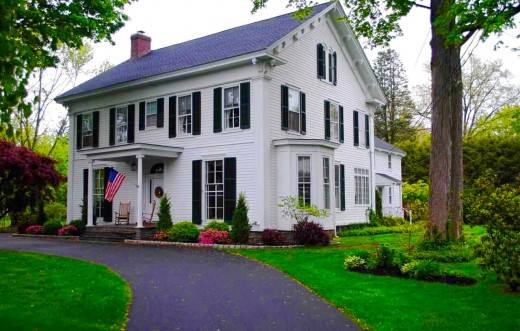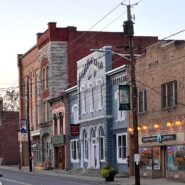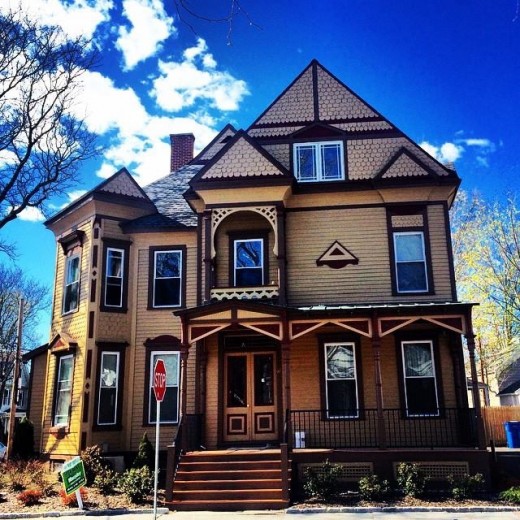Seven Essential Ways to Love Your Older Home
Haynes Llewellyn | May 1, 2015To live in an older home is to be a caretaker of a property for a window in time. A window which, once open, brings a sense of history and warmth. As historical districts have extended their reach to include mid-century properties, an older home’s definition has expanded. However, it is the jewels built prior to World War II which we often define as older homes. As the former Board President of both a Historical Association and Historic House Museum, I am often consulted regarding the exterior renovation of older homes.
The Hudson Valley – and Kingston in particular – has an amazing array of older homes from every architectural period. Constantly besieged with questions regarding how to love your older home, The Friends of Historic Kingston collaborated with the City Of Kingston, Sue Cahill, and the New York State Office of Parks, Recreation and Historic Preservation to create a brochure. Called ‘7 Ways to Love Your Older Home,’ it’s a simple, straight-forward guide to loving, restoring and enhancing older houses. Here are the finer points:
Number One: Get to Know Your House a Little Better – For the purposes of this article, I will focus upon the various tools available for home research in Kingston. The brochure states “the Kingston Water Department can usually tell you when the water system was extended to your street and when your house was connected to it. If your house was built after the water system was installed on your street the “tap in” date” can be useful in helping to date your house.” Typically the deed to your home will list the previous owners and the tenure of residency. The city registers found in the Local History Room of the Kingston Public Library are an excellent resource for researching your homes previous owners and their occupations. The tax assessor’s office may also be a valuable resource, as most properties within the City of Kingston were photographed in the 1950’s for tax record purposes. An excellent guide to identifying the architectural style of your home is ‘A Field Guide to American Houses’ by Virginia and Lee McAlester.

Number Two: Love Those Details – Gingerbread porches, porch railings, architectural brackets, window sashes, Dutch doors, bluestone sidewalks and soffits are some of the architectural accessories that provide character to a home. Realistically, it is often less expensive to restore the older elements of your homes design than to replace them. I often think removing architectural detailing from a home strips the house of its innate character. Fortunately, in the Hudson Valley there are a significant number of expert craftsmen available to assist with your home’s restoration plan. By developing a restoration plan for your home you are less likely to become overwhelmed by the scope and inherent costs of restoration. By preserving your home’s architectural details you also increase both the property’s curb appeal and value.
Number Three: Fix the Front Porch – Porches are the Achille’s Heel of an older home. Exposed to sun, wind, snow and the other forces of nature, these exterior rooms are categorically one of a home’s most expensive restoration projects. Again, by developing a restoration plan, the replacement of railings, turnings, posts and balustrades becomes less daunting. Do not rob your home of its dignity by replacing decaying elements with unpainted wood and two-by-four railings. Instead, work with a local craftsman to insure your home’s beauty is preserved for the next generation.

Removing vinyl or aluminum siding returns a home’s natural character .
Number Four: – Use Natural Replacement Materials – Remove the siding or other artificial elements which may have been applied to your home over the years. Amazingly, a number of the homes whose authentic personality have been sheathed in vinyl or aluminum siding hold a secret, which once uncovered, reveals architectural details hidden from view. During a two-year exterior restoration process, one local Gothic Victorian home revealed a plethora of charming elements hidden for decades by aluminum siding. In many cases the underlying clapboards are in surprisingly good condition.

The Fine Paints of Europe provide a strong shield against the elements. Selecting an interesting door knocker and large scale lanterns also enhance a home’s entrance.
Number Five: Restore the Front Door – Essentially, the front door is a home’s calling card. Intricately carved doors, stain glass, and raised paneling are just a few of the design standards to be found throughout the local area. The charm of a well-designed antique door may never be replaced. I often advise clients to utilize Fine Paints of Europe when restoring an older doorway. Yes, Fine Paints of Europe is a slightly more expensive boutique brand of paint. However the durability of the paint’s finish rapidly repays the cost. Have you ever strolled through a Historic Town, such as Edgartown on Martha’s Vineyard, wondering how the owners manage to maintain such pristine entrance ways? Fine Paints of Europe is the answer.
Number Six: Paint It – The nitty-gritty of any facade restoration project is the selection of a workable color palette. I am a strong believer in using your most artistic talents when selecting a home’s color scheme. Architectural detailing pops when enhanced with a great splash of color. You might be surprised to learn your schematic color options for the period of your home might be more extensive than you thought. A bit of research often leads to an amazing array of color choices for every home from Vernacular to Federal to Greek Revival to Victorian and every style thereafter.

Landscaping instantly increases a home’s appeal and value
Number Seven: Landscape – Landscaping in many ways is the most rewarding aspect of a home’s restoration. Replacing overgrown or dead shrubbery instantly transforms a home’s appearance. If curb appeal is the mantra of Real Estate, then landscaping is the method. Again, by developing a long-range landscape plan the actual costs of landscaping may be deferred. It is also important to note that by purchasing smaller specimens of bushes, trees and shrubs, the cost differential is maximized. Within only a couple of growing seasons, smaller plantings rapidly reach the size of larger, more expensive options.
Loving your older home allows you to appreciate the value of its history. Simultaneously, restoring the exterior facade of a dwelling renews its character while increasing its value.
Read On, Reader...
-

Jaime Stathis | February 15, 2024 | Comment The Hudson Valley’s First Via Ferrata at Mohonk Mountain House
-

Ryan Keegan | November 28, 2023 | Comment Hunter, NY: Full Circle
-

Ryan Keegan | October 17, 2023 | Comment Ellenville’s Next Chapter
-

Joan Vos MacDonald | September 28, 2023 | Comment The Reinvisioned Livingston Manor Fly Fishing Club



